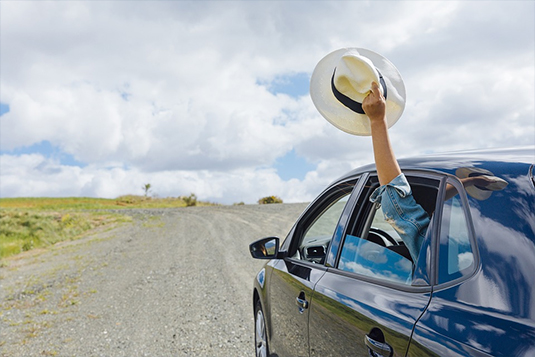Skaftafell: A Paradise in Vatnajökull National Park
Skaftafell, a treasured gem in southeastern Iceland, offers a spectacular fusion of glaciers, volcanoes, and serene natural beauty. As part of Vatnajökull National Park, Skaftafell boasts breathtaking landscapes that captivate visitors from around the globe. Whether you’re an adventurer seeking thrilling experiences or a nature enthusiast looking for tranquility, Skaftafell delivers it all.
Geology of Skaftafell: A Land Shaped by Fire and Ice
Skaftafell’s landscape has been molded by volcanic eruptions, glacial movements, and other geological processes over thousands of years. Beneath the serene beauty lies a tumultuous history of fire and ice.
Öræfajökull Volcano
Öræfajökull, Iceland’s largest active volcano and the highest peak in the country, is a dominant feature of Skaftafell. Standing at 2,110 meters (6,922 feet), the volcano is crowned by Hvannadalshnúkur, Iceland’s highest point. Eruptions from Öræfajökull have dramatically reshaped the region, creating fertile plains and contributing to the area’s unique geology.
Glacial Rivers and Floods
Glacial rivers such as the Skeiðará and Morsá flow through Skaftafell, carving deep valleys and shaping the land. The park has also experienced jökulhlaup, or glacial outburst floods, caused by volcanic activity beneath the ice. These floods have left behind vast stretches of black-sand plains, known as sandar, which contrast strikingly with the surrounding greenery and glaciers.
Adventurous Activities in Skaftafell
In addition to hiking and glacier tours, Skaftafell offers a range of activities that cater to adventure seekers.
Glacier Climbing
For those looking to challenge themselves, glacier climbing is an unforgettable experience. Equipped with crampons, ropes, and ice axes, participants can scale the icy walls of Vatnajökull under the guidance of experienced instructors. This activity is not only thrilling but also provides a unique perspective on the glacier’s intricate structures.
Photography Workshops
Skaftafell is a paradise for photographers, and several workshops are available for those looking to hone their skills. These workshops focus on capturing the area’s unique lighting, dramatic landscapes, and natural wonders, such as Svartifoss and the ice caves.
Wildlife Spotting
Although Skaftafell is better known for its geological features, it is also home to a variety of wildlife. Visitors may encounter Arctic foxes, reindeer, and numerous bird species during their explorations.
Skaftafell’s Cultural Landscape
The human history of Skaftafell is as fascinating as its natural history. Early settlers were drawn to the area for its fertile land and relative shelter from harsh Icelandic weather. Today, remnants of farms and settlements tell stories of resilience and adaptation in the face of natural challenges.
Farms and Folklore
The name Skaftafell itself derives from an old farmstead that once existed in the area. Local folklore is rich with tales of supernatural beings, heroic deeds, and the enduring connection between humans and nature.
The Impact of Climate Change
Like many glacial regions, Skaftafell is not immune to the effects of climate change. The Vatnajökull Glacier has been receding due to rising global temperatures, altering the landscape and impacting local ecosystems. Efforts are underway to monitor and mitigate these changes, ensuring that Skaftafell remains a sanctuary for future generations.
Accessibility and Inclusivity
Skaftafell is designed to be accessible to a wide range of visitors, from seasoned adventurers to families and those with limited mobility. Several trails are wheelchair-friendly, and guided tours are available for those who require additional assistance. The visitor center staff is trained to provide support and recommendations tailored to individual needs.
Events and Programs
Throughout the year, Skaftafell hosts various events and educational programs aimed at fostering a deeper appreciation for Iceland’s natural heritage. These include guided nature walks, geology talks, and cultural exhibitions.
Annual Festivals
Skaftafell also serves as a venue for regional festivals celebrating Icelandic culture and traditions. These events often feature local music, storytelling, and culinary delights, providing visitors with a taste of Icelandic hospitality.
Tips for an Eco-Friendly Visit
As one of Iceland’s most popular destinations, Skaftafell sees thousands of visitors each year. To minimize your environmental impact, consider the following tips:
-
Use Reusable Water Bottles: Iceland’s water is among the purest in the world; refillable bottles reduce plastic waste.
-
Stick to Designated Trails: Off-trail exploration can damage fragile ecosystems and contribute to erosion.
-
Support Local Businesses: Purchase goods and services from local vendors to support the community and economy.
-
Respect Wildlife: Maintain a safe distance from animals and avoid disturbing their natural behavior.
Must-See Attractions Near Skaftafell
For travelers with extra time, Skaftafell serves as an excellent base for exploring nearby attractions.
Jökulsárlón Glacier Lagoon
Located just a short drive from Skaftafell, Jökulsárlón is one of Iceland’s most iconic destinations. The lagoon is filled with floating icebergs that have calved from the Breiðamerkurjökull Glacier, creating a surreal and ever-changing landscape.
Diamond Beach
Adjacent to Jökulsárlón, Diamond Beach is a striking black-sand shore where icebergs wash up after drifting out to sea. The contrast between the sparkling ice and dark sand makes this a favorite spot for photographers.
Fjallsárlón Lagoon
Smaller and less crowded than Jökulsárlón, Fjallsárlón offers an intimate experience with floating icebergs and stunning views of the Vatnajökull Glacier.
Why Skaftafell Should Be on Your Iceland Itinerary
Skaftafell is more than just a nature reserve—it’s a testament to the beauty, power, and fragility of Iceland’s landscapes. Whether you’re drawn to its towering glaciers, cascading waterfalls, or serene hiking trails, Skaftafell offers experiences that will leave you in awe.
A visit to Skaftafell is an invitation to connect with nature, immerse yourself in Icelandic culture, and create memories that will last a lifetime.
The Role of Skaftafell in Vatnajökull National Park
Skaftafell holds a special place within Vatnajökull National Park, which spans over 14,000 square kilometers, making it one of the largest national parks in Europe. This reserve is often considered the gateway to the park, offering easy access to some of Iceland's most iconic natural attractions. Skaftafell serves as a microcosm of the park’s broader ecosystem, providing visitors with a glimpse into the diversity of life and geological wonders found throughout the region.
Practical Information for Visiting Skaftafell
Getting There
-
By Car: Skaftafell is approximately 4.5 hours from Reykjavik along Route 1.
-
Public Transport: Buses operate between major towns and Skaftafell during summer.
Accommodation
-
Camping: Skaftafell’s campsite is equipped with basic facilities, offering an affordable option for staying close to nature.
-
Hotels and Guesthouses: Nearby villages such as Hof provide cozy lodgings.
Packing Essentials
-
Waterproof clothing and sturdy hiking boots.
-
Snacks, water, and sunscreen.
-
A camera for capturing Skaftafell’s beauty.
The Ecosystem of Skaftafell
Skaftafell is home to a rich variety of flora and fauna.
Flora
-
Arctic Wildflowers: Lupines and buttercups add a splash of color to the landscape.
-
Mosses and Lichens: These hardy plants thrive in the nutrient-rich volcanic soil.
Fauna
-
Birdlife: Arctic terns, puffins, and golden plovers are commonly spotted.
-
Mammals: Look out for Arctic foxes and reindeer grazing in the valleys.
Seasons in Skaftafell
Skaftafell’s charm varies throughout the year, with each season offering unique experiences.
Summer (June–August)
-
Highlights: Long daylight hours, blooming wildflowers, and accessible trails.
-
Activities: Hiking, glacier exploration, and birdwatching.
Winter (November–February)
-
Highlights: Snow-covered landscapes, Northern Lights, and ice cave adventures.
-
Activities: Ice climbing, glacier hikes, and stargazing.
Spring (April–May)
-
Highlights: Melting snow reveals lush greenery and peaceful trails.
-
Activities: Scenic walks and photography.
Autumn (September–October)
-
Highlights: Vibrant foliage and mild weather.
-
Activities: Hiking and enjoying fewer crowds.
Skaftafell’s Trails: A Hiker’s Paradise
Skaftafell is renowned for its hiking opportunities, catering to all experience levels. The park’s well-marked trails allow visitors to explore its diverse scenery while enjoying the fresh Icelandic air.
Beginner-Friendly Hikes
-
Svartifoss Waterfall Trail
-
Distance: 1.5 km (round trip)
-
Duration: 1.5–2 hours
-
Highlights: This moderately easy hike leads to Svartifoss, where the waterfall cascades over striking basalt columns.
-
Skaftafellsjökull Viewpoint Trail
-
Distance: 2 km (round trip)
-
Duration: 1–1.5 hours
-
Highlights: A gentle trail offering stunning views of the Skaftafellsjökull glacier tongue.
Intermediate and Advanced Hikes
-
Kristínartindar Peaks
-
Distance: 17 km (round trip)
-
Duration: 6–8 hours
-
Highlights: A challenging trek with breathtaking vistas of glaciers, black sand plains, and the Atlantic Ocean.
-
Morsárdalur Valley Trail
-
Distance: 20 km (round trip)
-
Duration: 8–10 hours
-
Highlights: Traverse through the lush valley, passing waterfalls, glacial rivers, and untouched wilderness.
Multi-Day Adventures
For avid trekkers, Skaftafell serves as a gateway to extended routes, including the Laugavegur Trail and paths leading to Þórsmörk.
Skaftafell’s Geological and Historical Significance
Glacial Forces at Work
Skaftafell owes much of its beauty to the glaciers that have shaped the land over millennia. Seasonal melting and freezing cycles have carved deep valleys, deposited fertile soil, and created dramatic landforms such as glacial moraines and ice caves.
Volcanic Activity
Beneath Skaftafell lies a history of volcanic eruptions that have left their mark on the landscape. The interaction of fire and ice has created unique features, including basalt formations and tephra layers visible in the soil.
A Peek into the Past
Human settlement in Skaftafell dates back centuries. Early settlers adapted to the area’s challenging conditions, relying on fertile soils for farming. Historical remnants, such as abandoned farms, offer a glimpse into their lives.









